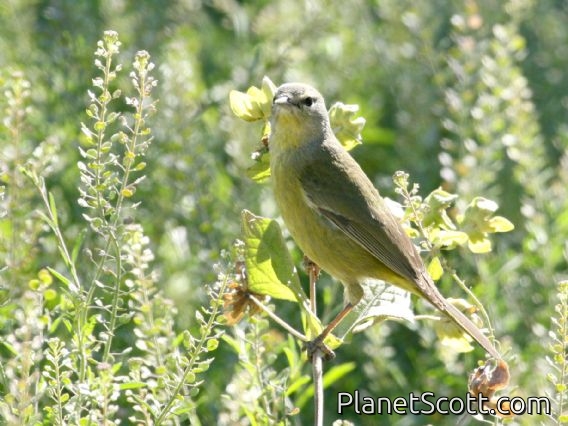Orange-crowned Warbler (Leiothlypis celata)

Orange-crowned Warbler (Vermivora celata)
×


Orange-crowned Warbler (Vermivora celata)
About Orange-crowned Warbler (Leiothlypis celata)
- Kingdom: Animals
- Phylum: Chordates
- Class: Birds
- Order: Perching Birds
- Family: New World Warblers
The orange-crowned warbler is a small songbird of the New World warbler family.
Source: Wikipedia
Visits
-
-
2007-01-01
Golden Gate Park - Conservatory of Flowers, United States of America -
2007-04-09
Anza-Borrego Desert State Park, United States of America -
2008-01-06
Singayta, Mexico -
2008-01-10
Tepic - Cerro de San Juan, Mexico -
2008-02-17
San Jose del Cabo - Estuary, Mexico -
-
2010-02-18
Patzcuaro, Mexico -
2010-02-20
Temescaltepec, Mexico -
2010-05-27
Kenai Peninsula, United States of America -
2012-05-06
Golden Gate Park - Buffalo Paddock, United States of America -
2012-09-22
East Wash, United States of America -
2013-03-17
Lake Merced , United States of America -
2013-06-05
Lake Tabeaud, United States of America -
2013-06-06
Middle Fork Cosumnes River, United States of America -
-
2013-09-13
Fort Mason, United States of America -
2013-12-07
Golden Gate Park - San Francisco Botanical Garden, United States of America -
2014-02-16
Golden Gate Park - San Francisco Botanical Garden, United States of America -
2014-04-26
Bernal Hill, United States of America -
2014-07-16
Nome, United States of America -
2014-07-17
Nome--Safety Sound, United States of America -
2014-07-20
Potter Marsh, United States of America -
2014-07-21
Seward, United States of America -
2014-12-08
Golden Gate Park - San Francisco Botanical Garden, United States of America -
2015-09-28
Montrose Point, United States of America -
-
-
-
-
-
-
-
-
-
-
-
-
-
-
-
-
-
-
2024-03-29
San Jose del Pacifico, Mexico -
-
-
-
-





